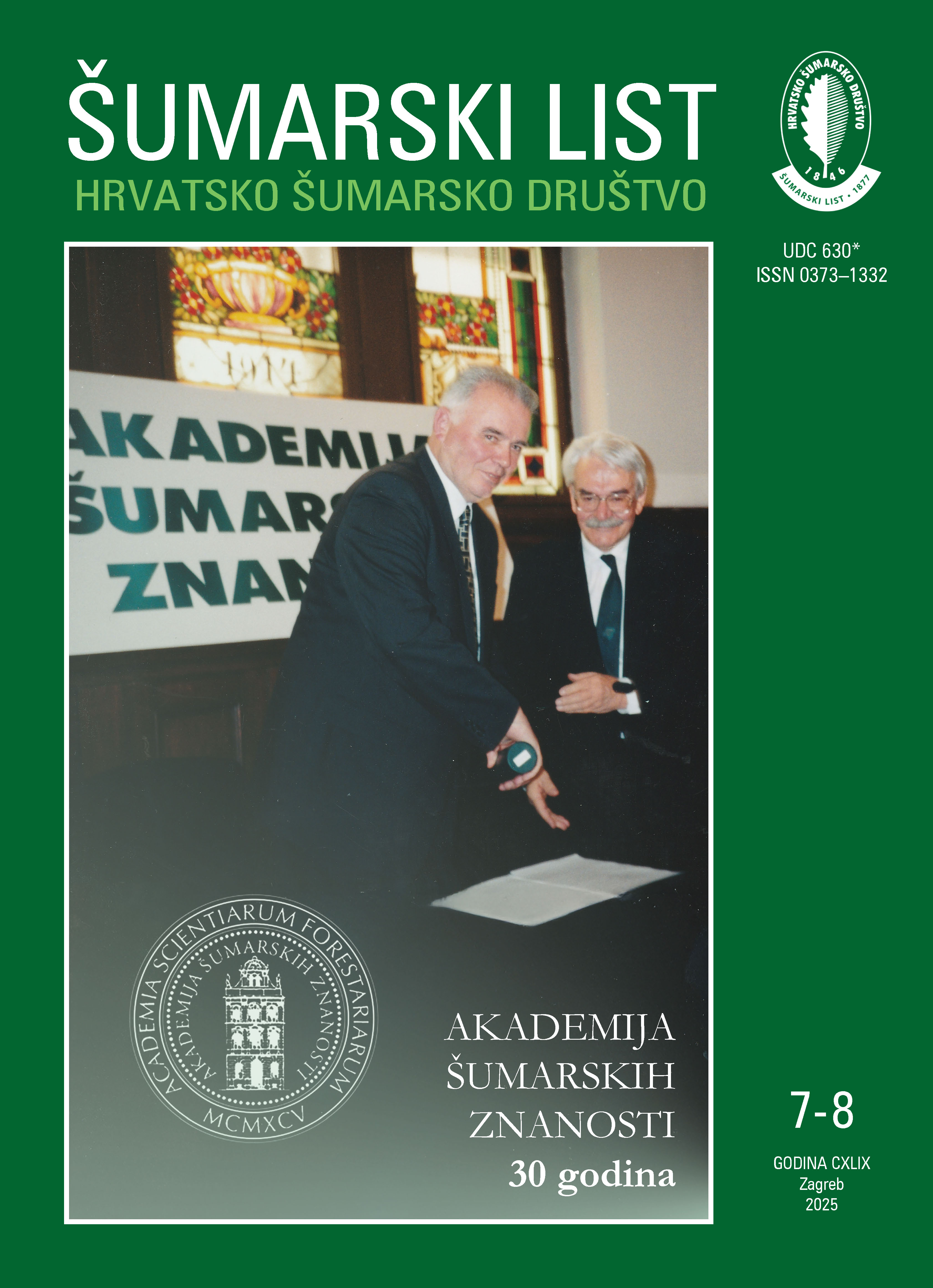Ornithofauna in the first age class of the pedunculate oak forest in Central Posavina
Keywords:
even-aged forest management, first age class, pedunculate oak, ornithofauna, protected species, biodiversity, The Birds Directive, Natura 2000Abstract
The first age class of even-aged managed forests, which includes stands up to 20 years old, shows significant differences in habitat conditions compared to older age classes, making it a suitable habitat for certain bird species. To assess the suitability of these habitats, a study of the ornithofauna was conducted in the first age class of pedunculate oak forest within Opeke Forest Management Unit, which is a part of the lowland forest complex of Lonjsko Polje. Monitoring was carried out using a combination of visual and audio identification methods alongside camera traps. The study was conducted from April to June 2023. The monitoring confirmed the presence of 19 bird species, two of which (collared flycatcher and red-backed shrike) are listed in Annex I of the Birds Directive. During the monitoring, a common buzzard was observed flying over the area, and it regularly perched on the edge trees of nearby stands, observing the surface of the study area. The presence of great spotted woodpecker throughout the study suggests that young pedunculate oak stands may meet some of its habitat requirements. Forest edge bird species, such as the red-backed shrike, are among the most threatened bird groups in Europe, with suitable habitats decreasing due to intensified agricultural activities. The occurrence of the red-backed shrike indicates the potential of young forest stands as alternative habitats for these bird species. The presence of these species in the first age class stand suggests that forest regeneration through shelterwood cutting can create partially suitable habitats for these species. Floodplain forest ecosystems like Lonjsko Polje cannot fully replace the primary habitats of these species. However, certain endangered species were found to use the first age class as their habitat. During the planning of management activities, it would be advisable to avoid sensitive stages for bird development. This study highlights the importance of understanding and preserving the ornithofauna in young pedunculate oak stands. Expanding knowledge about these ecosystems could contribute to the development of more effective forest management guidelines that support biodiversity and the conservation of endangered species.
Downloads
Published
License
Copyright (c) 2025 Matej Knezičić, Toni Spitz, Ivan Juraj Čehulić, Karlo Bukal, Kristijan Tomljanović

This work is licensed under a Creative Commons Attribution-NonCommercial 4.0 International License.


